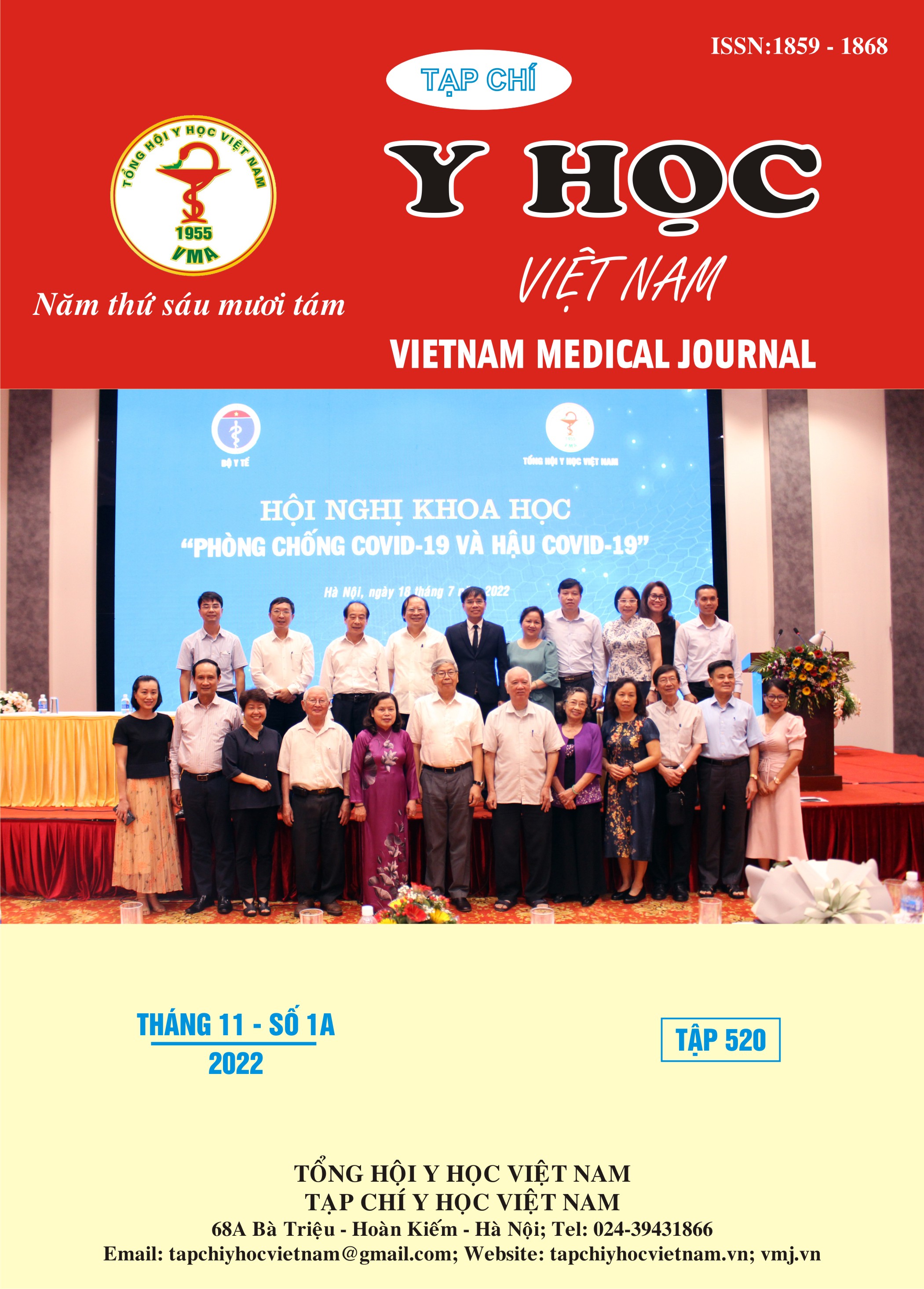CLINICAL FEATURES OF PERSONALITY DISORDERS IN PATIENT WITH ADJUSTMENT DISORDERS
Main Article Content
Abstract
Objectives: Describe clinical features of personality disorders in patients with adjustment disorders. Subjects and methods: Cross-sectional description of inpatients with adjustment disorders at National Institute of Mental Health - Bach Mai Hospital from August 2021 to August 2022. Results: There were 14 patients (29.79%) diagnosised with personality disorders in the sample. Among them, there were 6 patients with anxious [avoidant] personality disorder (F60.6) accounting for the highest rate of 42.86%, 4 patients with emotionally unstable personality disorder (F60.3) accounts for 28.57%, 2 patients with schizoid personality disorder (F60.1) accounted for 14.29%, 1 patient with histrionic personality disorder (F60.4), 1 patient with dependent personality disorder (F60.7) accounted for 7.14%. 100% of patients with anxious [avoidant] personality disorder have criteria described by persistent and pervasive feelings of tension and appredension, all patients with emotionally unstable personality are the borderline type. 57.1% of people with personality disorder have a good romantic relationship, 28.6% have a discordant romatic relationship, and 14.3% are separated or divorced with their partners. 78.6% patients have few friends and colleagues, 28.6% have discordant relationships with their friends or colleagues, no patient has had to change many jobs. Conclusion: 29.79% patients has personatily disorder. Anxious [avoidant] personality disorder was the most common type. Most of patients with personality disorders have maintained a good romantic relationships (57.1%). Having few friends or colleagues occurred with the highest rates, nobody has had to change too many jobs.
Article Details
Keywords
rối loạn nhân cách, rối loạn sự thích ứng
References
2. Kaplan, Sadock’’s. Adjustment Disorders. In: Synopsis of Psychiatry. 11th ed. Wolters Kluwer; 2015:965-974.
3. Casey PR, Dillon S, Tyrer PJ. The diagnostic status of patients with conspicuous psychiatric morbidity in primary care. Psychol Med. 1984;14 (3):673-681. doi:10.1017/s0033291700015282
4. Blacker CVR, Clare AW. The prevalence and treatment of depression in general practice. Psychopharmacology. 1988;95(1):S14-S17. doi: 10.1007/BF00172624
5. Mitchell AJ, Chan M, Bhatti H, et al. Prevalence of depression, anxiety, and adjustment disorder in oncological, haematological, and palliative-care settings: a meta-analysis of 94 interview-based studies. Lancet Oncol. 2011;12(2):160-174. doi:10.1016/S1470-2045(11)70002-X
6. Strain JJ, Smith GC, Hammer JS, et al. Adjustment disorder: a multisite study of its utilization and interventions in the consultation-liaison psychiatry setting. Gen Hosp Psychiatry. 1998;20(3):139-149. doi:10.1016/s0163-8343(98) 00020-6
7. Yaseen YA. Adjustment disorder: Prevalence, sociodemographic risk factors, and its subtypes in outpatient psychiatric clinic. Asian J Psychiatr. 2017;28:82-85. doi:10.1016/j.ajp.2017.03.012
8. Zelviene P, Kazlauskas E, Maercker A. Risk factors of ICD-11 adjustment disorder in the Lithuanian general population exposed to life stressors. Eur J Psychotraumatol. 2020;11(1): 1708617. doi:10.1080/20008198.2019.1708617
9. Jones R, Yates WR, Williams S, Zhou M, Hardman L. Outcome for adjustment disorder with depressed mood: comparison with other mood disorders. J Affect Disord. 1999;55(1):55-61. doi:10.1016/s0165-0327(98)00202-x
10. Alnæs R, Torgersen S. The relationship between DSM-III symptom disorders (Axis I) and personality disorders (Axis II) in an outpatient population. Acta Psychiatrica Scandinavica. 1988; 78(4): 485-492. doi:10.1111/j.1600-0447. 1988. tb06371.x


